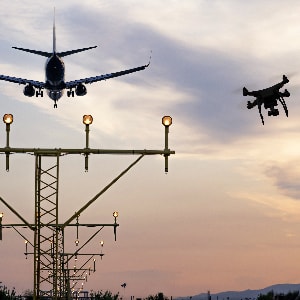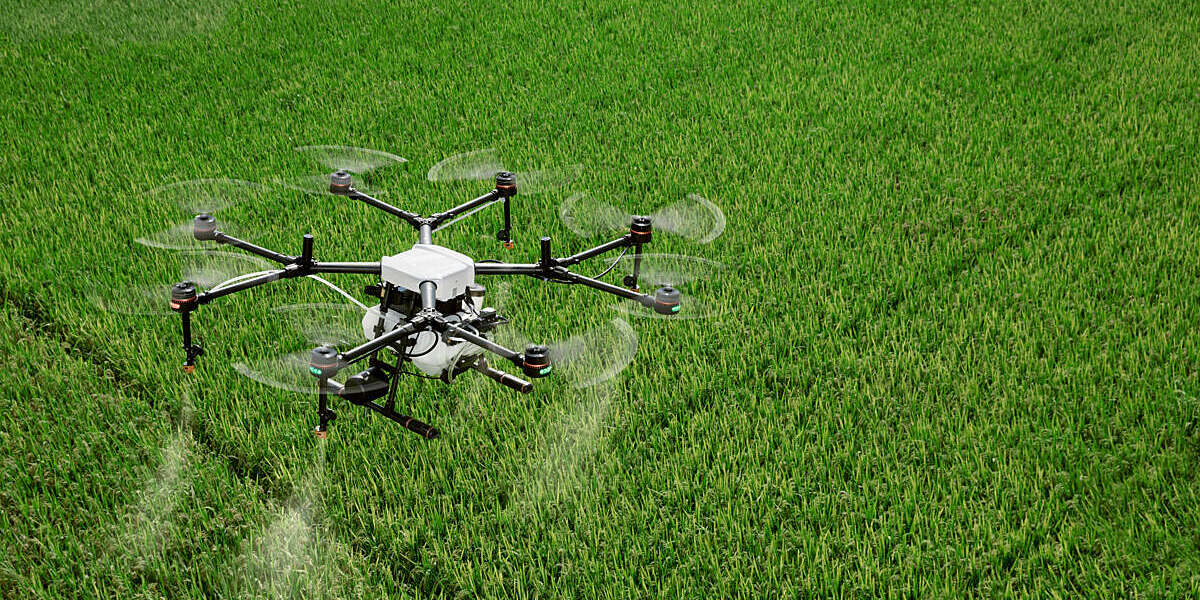Mission possible for unmanned aircraft systems


During the COVID-19 pandemic, air drones or unmanned aircraft systems have played vital roles, from delivering aid to monitoring social distancing. However, issues such as safety, security and the sharing of airspace have continued to delay their full commercial use.
Unmanned aircraft systems (UAS) have undoubtably become the technology of the moment which, from humble beginnings, is set to create an industry to rival the automotive and aviation industries combined. UAS gained notoriety as toys, but have quickly evolved into the basis for a high-value, rapid-growth industry spanning almost all sectors, including logistics, medical, surveying, security and transport, and are being used in almost every environment on the planet.
UAS, which can be remotely controlled, but are increasingly being equipped with autonomous capabilities, have been around for a long time. It has only been in the past five years that the technology to make them commercially viable tools in a huge range of applications has become affordable. Initially small, a drive to wide-scale commercialization has seen the design of larger and more sophisticated UAS capable of the movement of cargo and, in the future, people. It is here that widescale commercial use is more likely to flourish into a global industry rather than through lots of small UAS to carry small items.
The COVID-19 crisis offered ample opportunity for UAS systems to prove themselves.
Air drones for good
UAS have been used in support of humanitarian missions and by first responders in many emergencies. They played a significant role in helping to save the structure of Notre-Dame cathedral in Paris when it was ravaged by fire in 2019. According to Asia Times, UAS were deployed to map the ground damage and rubble when the roof was in danger of collapsing, saving photographers from taking unnecessary risks. The same article points to their ability to conduct aerial mapping for wildfire response, sparing firefighters.
UAS have also proved an important humanitarian tool, supplying blood and essential medicines to remote clinics in such countries as Rwanda. This has become even more vital during the COVID-19 pandemic. According to a World Economic Forum Agenda blog, the US medical drone company Zipline is now using its deliveries to support the coronavirus fight in Africa and is also helping other countries in their response efforts to COVID-19. “We are stocking a whole bunch of COVID-19 products and delivering them to hospitals and health facilities whenever they need them instantly,” Zipline’s Chief Executive, Keller Rinaudo, told CNN Business.
By 2025, it is estimated that the UAS market will be worth more than USD 5 billion. For businesses and other organizations, UAS can only enhance their productivity. They are not only small and agile but they tick the “green” box as well. A report in the Smithsonian Magazine suggests that, in terms of greenhouse gas emissions, package delivery by small UAS can be better for the environment than delivery by trucks.

Drones helped survey the damage after the Notre-Dame de Paris fire in 2019.

Delivering lifestyle improvements to people in remote areas.
So what’s stopping us?
Despite all these obvious benefits, there are obstacles to be addressed, such as safety, security and privacy which, according to Robert Garbett, Chief Executive of Drone Major Group, “is not achievable without robust safety and quality standards upon which the industry can grow safely”.
In 2015, ISO took steps to resolve these issues when it founded its technical subcommittee ISO/TC 20/SC 16, Unmanned aircraft systems, to develop the ISO 21384 series for UAS standards on safety and quality for product manufacture, operations and unmanned traffic management, which will undoubtably be widely referenced by international civil aviation authorities. ISO 21384-3, Unmanned aircraft systems – Part 3: Operational procedures, was the first International Standard on UAS to be published in December 2019. It was developed by ISO/TC 20/SC 16 working group WG 3, Operations and procedures, convened by Garbett, who is also Chairman of the BSI Committee for UK Drone Standards and founder of the Drone Delivery Group.
John Walker, the Chair of ISO/TC 20/SC 16, has oversight of all standards being published within the subcommittee and, with the support of the Committee Manager Chris Carnahan, says: “During the pandemic, UAS were used around the world in support of humanitarian and social service applications. Public acceptance for these hugely beneficial applications has been overwhelmingly positive and governments are waking up to the benefits that UAS can bring to the support of these much-needed services.” He believes this has created an opportunity to expand the use of UAS for human benefit in post-COVID-19.
Face-to-face meetings of the standards committees would be a welcome return for Walker. Although working group meetings have been held virtually, he says that in-person meetings are essential for meaningful and robust discussions between participants, “especially within the international community where experts from a diverse range of countries come together to shape UAS standards for global users”.
Frank Fuchs, an international aviation law adviser and Convenor of ISO/TC 20/SC 16’s working group WG 1, which has developed ISO 21384-4, Unmanned aircraft system – Part 4: Vocabulary, says: “The COVID-19 crisis offered ample opportunity for UAS systems to prove themselves as technological systems that offer support for society and help protect human lives. Using UAS in areas with high numbers of COVID-19 infections showed that the use of UAS is very sensible when dealing with such a pandemic.”

UAS gained notoriety as toys but have quickly evolved into the basis for a high-value, rapid-growth industry.

Drones are an effective border security solution.
The big challenge
The lack of enabling regulations and underpinning safety and quality standards has, without doubt, slowed the progress of the industry to full commercialization, but this is changing. As the ISO UAS standards set matures, it is informing regulators and initiatives such as that called for in the Drone Delivery Group white paper entitled “The Commercialisation of the UK Drone Industry”. This initiative points to the establishment of test and development areas to accelerate the evolution of technology, from concept to commercial operations, while also providing vital intelligence to regulators and standards makers.
Initiatives such as this and others in development by industry and governments around the world seek to address the operation of UAS beyond visual line-of-sight (BVLOS). It is in such operations where the management of UAS air traffic will be essential. Unmanned Traffic Management (UTM) systems will play a vital role and ISO 23629 for UAS traffic management will help to level the playing field. Although the series is still under development, once standards for UTM have been published, they will provide the basis for UTM systems to be developed and operated to a globally recognized standard.
Walker says the ISO/TC 20/SC 16 UTM work plan for ISO 23629 is developing standards that include functional structure and requirements for UTM services and service providers. “These UTM standards will serve as the foundation that will complement operational procedure standards being developed within the ISO 21384 series and other ISO/TC 20/SC 16 standards that support requirements for safe commercial UAS operations.”
New class of aircraft
Looking ahead, Walker believes that the development of the ISO 23629 series is as significant as advances in global aerospace development, such as the introduction of radar, GPS and the jet engine. “UTM will allow a new class of aircraft to safely enter civil global airspace in support of humankind with services including medical and other logistics, law enforcement, and transportation in both urban and rural areas.”
Given the rapid pace of technological advancement, Fuchs says that ISO standards in general, and this series of standards in particular, will become even more important. As Garbett put it in an article in Professional Security Magazine when ISO announced the new series: “The standards will deliver a new confidence among investors in the safety, security and compliance of commercial drone operations […]. Drones are a transformative global phenomenon, offering an unprecedented economic opportunity for those businesses and countries with the foresight to embrace this technology.”
Those words certainly resonate today. As transport and the aviation industry recover after COVID-19, there will be a drive for aviation to be more sustainable. Through new developments in UTMs and UAS, and with the help of standards such as the ISO 21384 and ISO 23629 series, UAS look set for a great lift-off. Developing and advancing quality standards for UAS, Walker concludes, will underpin the safe evolution of this fast-moving and exciting industry. Watch this (air)space.

In transit
This issue uncovers current trends in the transportation industry and outlines upcoming winning strategies that will lead the entire transport sphere in 2021. Discover the latest solutions here.
/en/2020/ISOfocus_143/ISOfocus_143.jpg/thumbnails/300)


